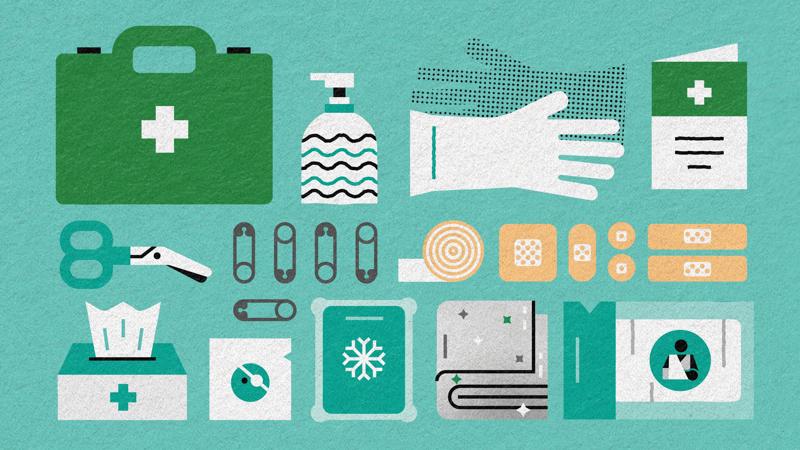
Be an emergency aider: spinal injuries
You’ll need
- Chairs
Before you begin
- Make sure the person leading the activity knows about first aid. Someone from your group or local area with a first aid certificate could take charge, or you could reach out to places that help provide first aid training or support, for example, St John Ambulance or the British Red Cross.
- You’ll need enough leaders for the activity, including enough people who are happy to demonstrate first aid techniques.
- Adults should only demonstrate and practise first aid on other adults; young people should only demonstrate and practise first aid on other young people. Adults and young people should never demonstrate or practise first aid on each other.
- Remember that this activity touches on topics that might be sensitive for some people. Give everyone the opportunity to step away if they need to compose themselves.
- Set out the chairs in semi-circle facing the speaker and get everyone to sit down.
Learn what to do for a spinal injury
- Have a quick chat with everyone to find out what they know about spinal injuries. Why are they serious? How do they happen?
- Explain that people with spinal injuries need to be immobilised as soon as possible. They should help everyone to understand the signs and symptoms of a potential spinal injury.
- Demonstrate with another adult how to treat a possible spinal injury.
- Everyone should get into groups of three young people. One person should be the casualty, one person should be the first aider, and the third person should watch and help if needed. They should practise treating the casualty for a spinal injury, swapping roles so that everyone has a turn at being the first aider. Make sure there are adults walking around so they can help if anyone’s finding it tricky.
There are lots of different possible causes for a spinal injury including falling from height, falling awkwardly, being involved in a vehicle collision, and something heavy falling onto you. The greatest risk is damage to the spinal cord. For detailed and up-to-date information, check out the St John Ambulance website.
Signs and symptoms include:
- pain in the neck or back at the site of injury
- irregular shape or twist in the normal curve of the spine
- tenderness and/or bruising in the skin over the spine
- movement of limbs may be weak or absent
- loss of sensation, or abnormal sensations, for example, burning or tingling
- loss of bladder and/or bowel control
- breathing difficulties
Treatment for a spinal injury involves calling 999, not moving the casualty unless they’re in immediate danger, supporting their head, and monitoring them until help arrives. If you need to open their airway, use the jaw-thrust technique.
Reflection
This activity was all about developing skills and being responsible. Can anyone remember what a first aider should do until emergency help arrives? Why is it so important? Some activities have a higher risk of spinal injuries: can anyone think of activities with a very low or slightly higher risk? People could think about playing board games compared to adventurous activities and sports like horse riding and rugby. Why is it important that people playing sports or having adventures know what to do in an emergency?
Safety
All activities must be safely managed. You must complete a thorough risk assessment and take appropriate steps to reduce risk. Use the safety checklist to help you plan and risk assess your activity. Always get approval for the activity, and have suitable supervision and an InTouch process.
If anyone can’t reach their casualty, or is unable to do things like supporting someone’s head, they can still learn so they can instruct others. They may want to get into a group of four, so they can tell a fourth person what to do to help the casualty.
All Scout activities should be inclusive and accessible.
Put people’s skills to the test by creating some scenarios in your meeting place. Once groups enter, they’ll need to do a primary survey to work out what they need to do. You could also combine the skills people learned in this activity with other emergency aid skills and organise an incident hike.
Young people with first aid qualifications could help others if they’re struggling, with a leader supervising.
